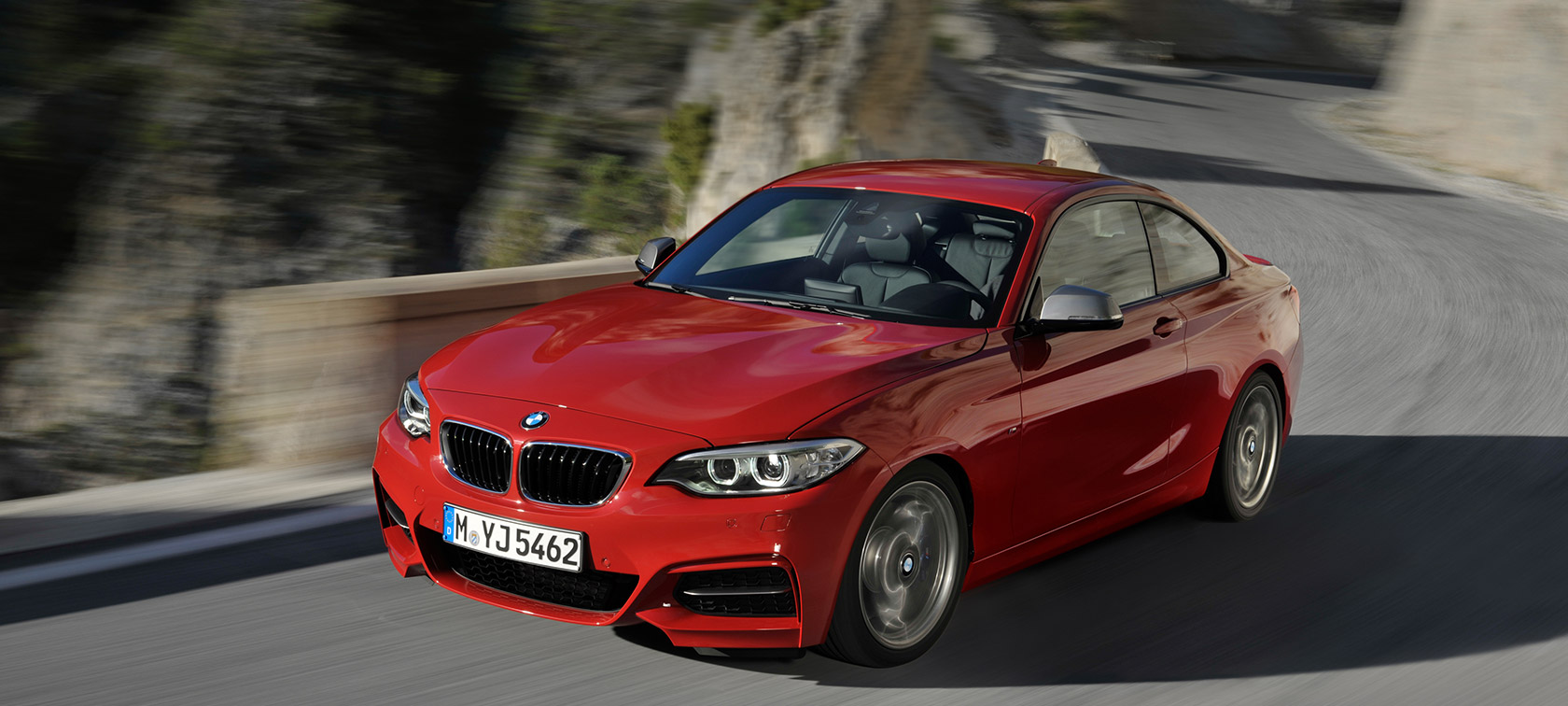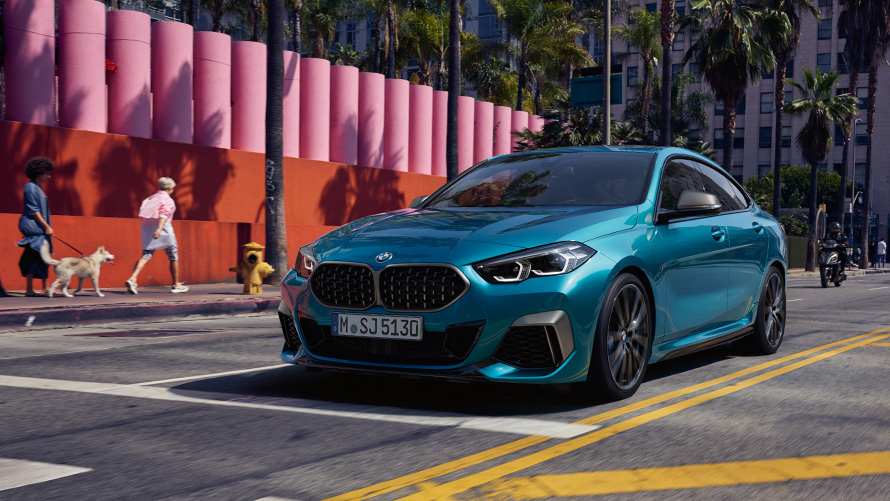Our tool for managing your permission to our use of cookies is temporarily offline. Therefore some functionality is missing.
THE LATEST BMW 2 SERIES.
The BMW 2 Series models have been thrilling customers in the compact car segment since 2013 – these sporty, powerful, and yet practical vehicles guarantee the pure driving pleasure that is synonymous with BMW. Whether in an urban environment, on long journeys or in the countryside, the BMW 2 Series includes the right vehicle for every purpose – confident, extroverted, and dynamic.
BMW 2 SERIES OVERVIEW.
Uncompromising, self-confident, and expressive: As the successors to the BMW 1 Series Coupé, the BMW 2 Series Coupé, Convertible and Gran Coupé are the continuation of its concept. The BMW 2 Series stands for powerful, compact vehicles – the best in their class. Naturally, this also applies to the BMW 2 Series Active Tourer and BMW 2 Series Gran Tourer, which combine sportiness and efficiency with flexibility and versatility to bring an extra dose of excitement and comfort to everyday life.

A BRIEF HISTORY OF THE BMW 2 SERIES MODELS.
Discover the history of the BMW 2 Series models and the individual vehicle variants – sporty coupés, soft tops and hard roofs, as well as the flexible and versatile tourers.
A BRIEF HISTORY OF THE BMW 2 SERIES MODELS.
Discover the history of the BMW 2 Series models and the individual vehicle variants – sporty coupés, soft tops and hard roofs, as well as the flexible and versatile tourers.
THE FIRST GENERATION OF THE 2 SERIES.
BMW 2 Series Coupé (F22).

The successor to the BMW 1 Series Coupé set its own visual accents in 2013 and emphasized the vehicle's sporty character even more clearly with its flared rear wheel arches, athletic rear end and striking silhouette with sloping roofline. Following the model update in 2017, new front and rear lights ensured an even more commanding appearance. The front headlights featured LED technology as standard.
Agile engines delivered dynamic propulsion across the range, whether with a three-cylinder gasoline engine with a displacement of 1.5 liters or the M models, whose CS variant produced a brawny 450 hp (331 kW). The chassis quickly showed that these compact vehicles also carried the BMW DNA, with precise, clearly defined steering that ensured control in every situation.
Inside, the driver was supported by a wide range of assistance systems, such as active cruise control, which reacts to the speed of the traffic in front of the vehicle. In addition, infotainment systems able to stream music from the leading online libraries promised pure entertainment while on the road.
Production period: 2013 – 2021
Engines: 1.5 – 3.0 liters (100 – 331 kW, 136 – 450 hp), 3 & 6-cylinder
Length/width/height: 4,432 – 4,468 mm / 1,774 mm / 1,390 – 1,418 mm
BMW 2 Series Gran Coupé (F44).

In 2020, the BMW 2 Series welcomed a new addition with no direct predecessor: the BMW 2 Series Gran Coupé. Exceptional through and through, it simply exudes confidence down to the last detail – from the BMW kidney grille with mesh design in the BMW M235i xDrive and an elaborate, three-dimensional structure, to the frameless doors and the sideline, which is raised towards the rear and creates a striking contrast with the sloping roof. Performance-oriented aesthetics meet individuality and extravagance!
This concept continues inside the BMW 2 Series Gran Coupé, where the fully digital BMW Live Cockpit Professional shows the driver all relevant information in every situation.
In addition to the 3 cylinder turbocharged engines, which feature adjustable charge vanes, 8-speed Steptronic transmissions also ensure peerless driving performance.
Production period: 2020 – present
Engines: 1.5 (103 kW, 140 hp), 3 cylinder
Length/width/height: 4,526 mm / 1,800 mm / 1,420 mm
Fuel consumption and CO2 emissions.
BMW 218i Gran Coupé:
Fuel consumption in l/100 km (combined): 5.9
CO2 emissions in g/km (combined): 135
The values of fuel consumptions, CO2 emissions and energy consumptions shown were determined according to the European Regulation (EC) 715/2007 in the version applicable at the time of type approval. The figures refer to a vehicle with basic configuration in Germany and the range shown considers optional equipment and the different size of wheels and tires available on the selected model.
The CO2 efficiency specifications are determined according to Directive 1999/94/EC and the European Regulation in its current version applicable. The values shown are based on the fuel consumption, CO2 values and energy consumptions according to the NEDC cycle for the classification.
For further information about the official fuel consumption and the specific CO2 emission of new passenger cars can be taken out of the „handbook of fuel consumption, the CO2 emission and power consumption of new passenger cars“, which is available at all selling points and at https://www.dat.de/angebote/verlagsprodukte/leitfaden-kraftstoffverbrauch.html.



